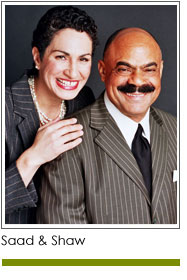 We were recently asked what we thought about setting a fundraising goal for fiscal year 2014 by simply adding 10% to the 2013 goal. Good question. And of course we had questions of our own. The first of which was “did the nonprofit meet its 2013 goal?” The answer – and the reasons why – will be important to take into consideration when setting a goal for 2014.
We were recently asked what we thought about setting a fundraising goal for fiscal year 2014 by simply adding 10% to the 2013 goal. Good question. And of course we had questions of our own. The first of which was “did the nonprofit meet its 2013 goal?” The answer – and the reasons why – will be important to take into consideration when setting a goal for 2014.
Here are a few other things to take into consideration. What are the organization’s financial needs and how will these fluctuate based on changes in projected operating expenses and program costs? For some organizations the fundraising goal is set based on projected revenue from earned income, multi-year grants and other “secured” funding streams. These numbers are subtracted from the nonprofit’s expenses and the balance becomes the fundraising goal. That is one way to determine a goal, but it may or may not be a goal that can be met.
The time and attention paid to setting the goal can impact the extent to which you can meet it. Here are a few things to consider when creating a fundraising goal. Were there any unusual large gifts in 2013 that may not be repeated in 2014? (In order to sustain 2013 giving levels you will need to determine how these can be replaced if you believe they were one time gifts.) How many donors give annually, and how much do they give? What is your “donor attrition rate” – how many people who give one year don’t give the following year? (Knowing the attrition rate can help inform how many new gifts you need to maintain at prior year’s level.) Who are the prospective donors you have identified? What is the likelihood they will give in the coming year? What has been your organization’s track record in turning prospective donors into actual donors? How many donors increase their giving year over year.
Other issues to consider include, who will ensure your special events meet their revenue projections? Has event revenue been growing or declining? Who will solicit corporate sponsors and underwriters? Can your marketing team create awareness that drives giving? Who will ensure that direct mail and/or e-giving campaigns are produced on schedule? Which of the foundations that have provided support in the past might make a grant in 2014? Have you identified new sources of foundation or corporate support? Who will solicit these?
Finally, review your fundraising goal against your capacity. Consider how fundraising volunteers can positively impact (increase) funds raised. Compare the number of staff, board members and volunteers against what needs to be accomplished. Last but not least, compare 2013 fundraising revenue against 2014 projections. We believe that taking all of the above into account is a better way to determine a fundraising goal. What are your experiences?
Copyright 2013 – Mel and Pearl Shaw
Mel and Pearl Shaw are the authors of “Prerequisites for Fundraising Success.” They position nonprofits for fundraising success. Visit them at www.saadandshaw.com.











